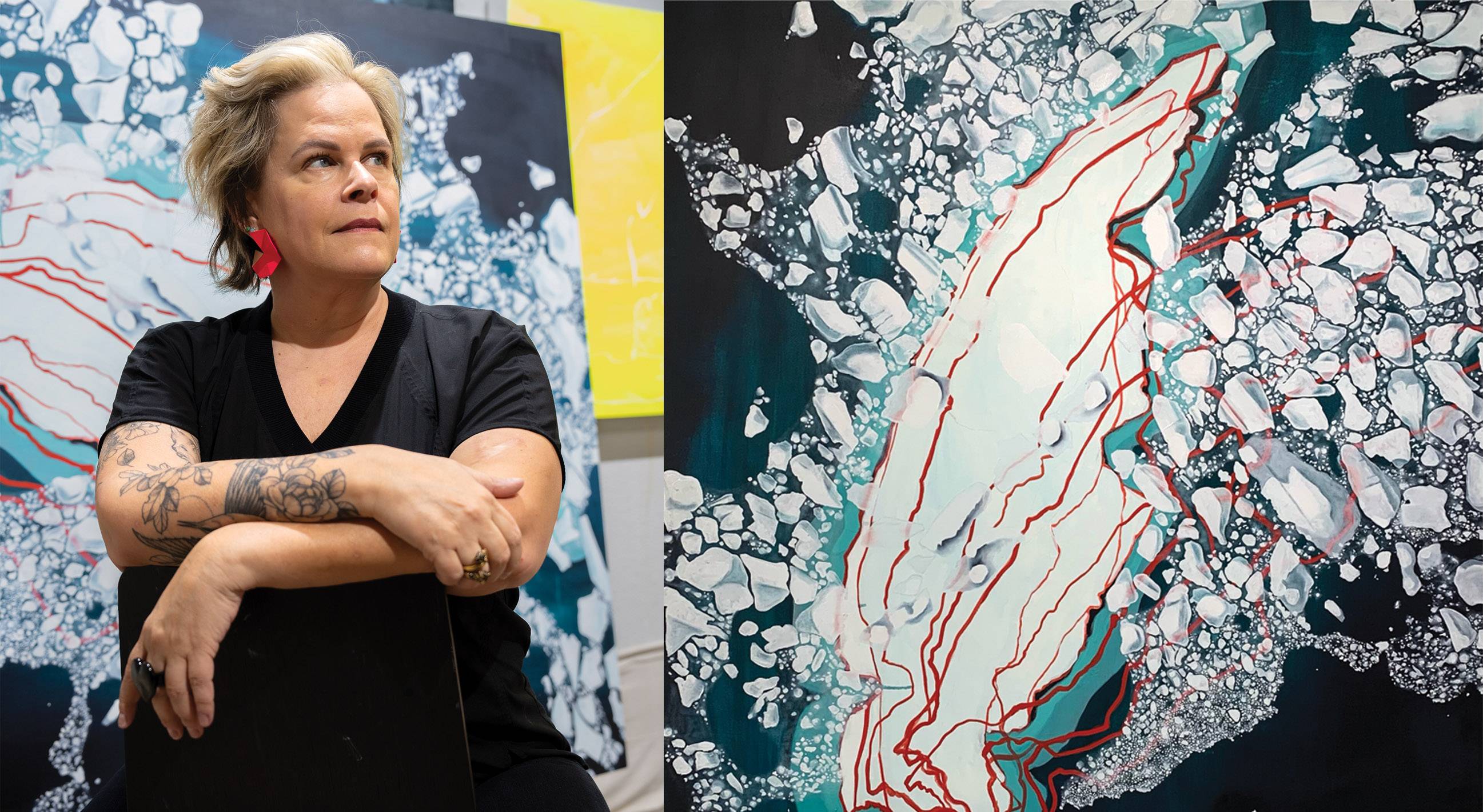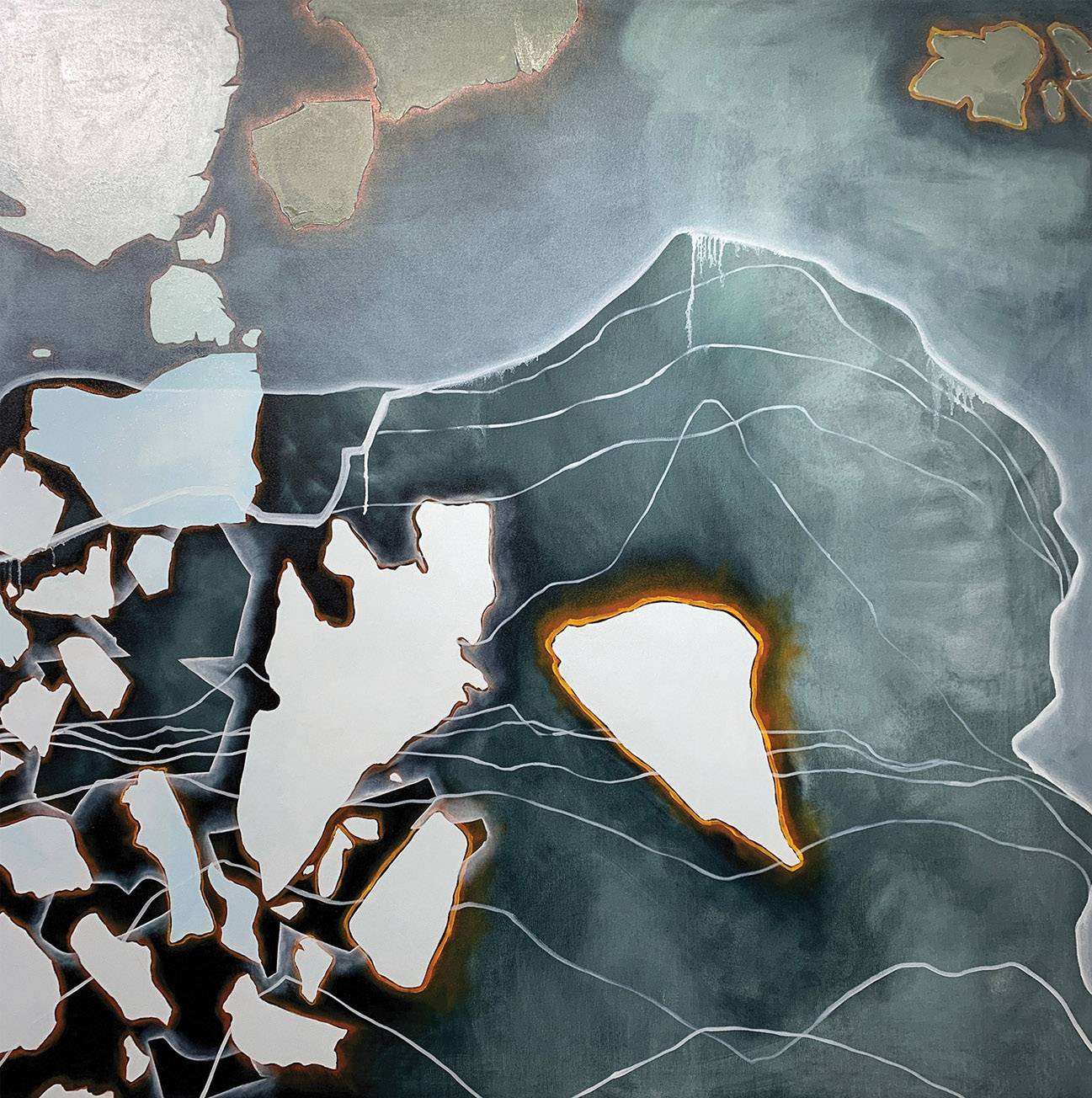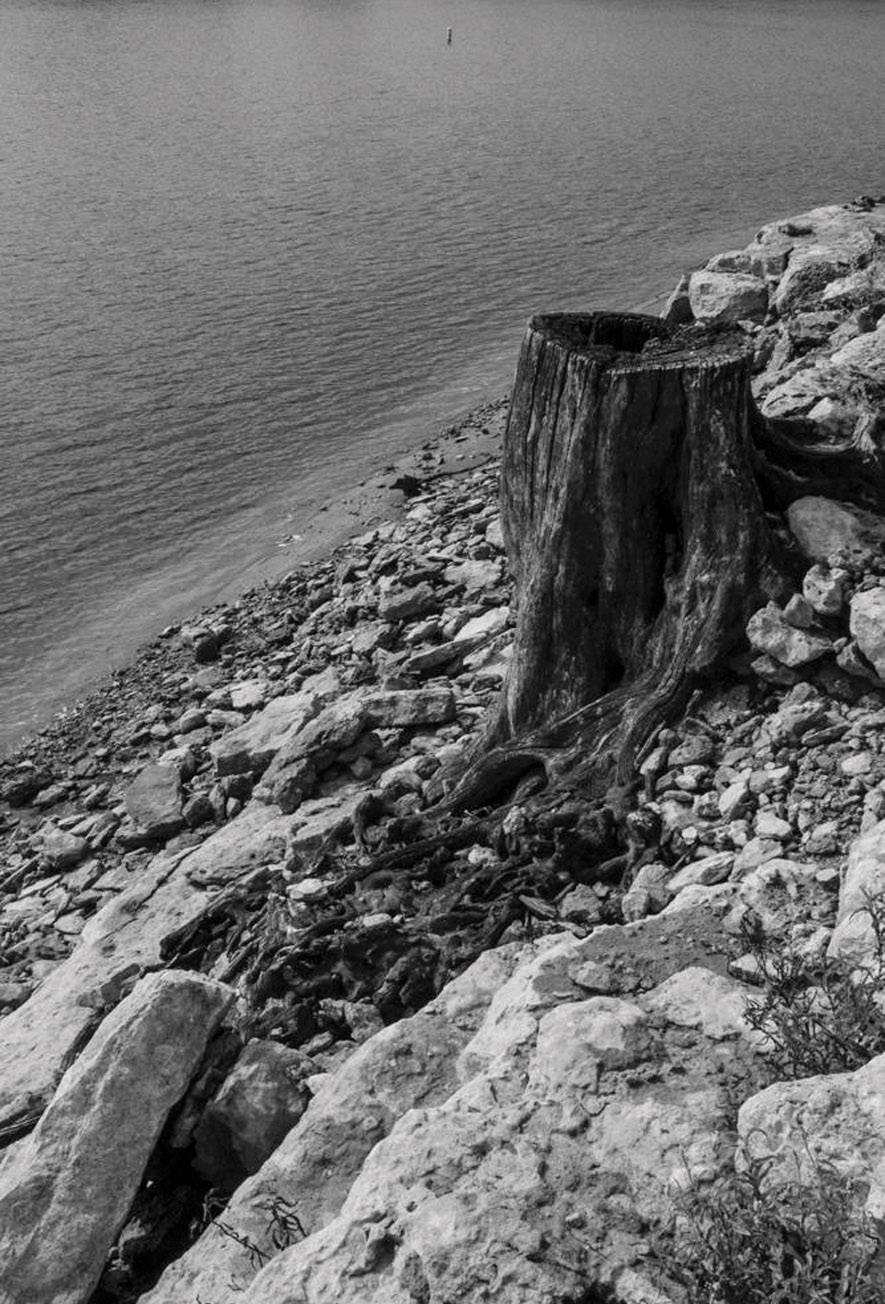Vanishing Icescapes
Artist and teacher Shannon Faseler captures the beauty of glaciers to magnify their decline
By Matt Joyce


Shannon Faseler dug into sources not typically associated with fine art to create her “Glacier Series” of oil paintings. From NASA satellite images to climate statistics and scientific journal articles, a range of data informs Faseler’s depictions of melting glaciers and sea ice in the Arctic and Antarctica.
Faseler, a lecturer in Texas State University’s School of Art and Design, says she’s been fascinated by science and environmental issues related to water since childhood. In “Glacier Series,” her paintings imagine glaciers in varying conditions, from Mountains of Ice to Where Will the Polar Bears Go?
“Several years ago, I saw a photograph of an emaciated polar bear on a tiny little piece of ice, and it just devastated me,” Faseler says. “I started to think about the loss of ice mass and how it was affecting animal populations, and about how it’s hard for people to conceptualize because it’s far away and not immediately impacting them.”
Glaciers around the world have been shrinking for decades as warming temperatures cause them to melt faster than they accumulate new ice, according to the U.S. Environmental Protection Agency. The ramifications could cause problems worldwide. Greenland and Antarctica are home to most of the world’s glacial ice. According to NASA, if the ice in those two places were to melt at once, sea levels would rise by 215 feet.
Faseler has her hands full with teaching classes in curatorial practices, exhibition design, art history, and intro to fine arts. But working on weekends in her home studio, she has created roughly 30 glacier artworks over the past 10 years.
Her paintings — characterized by cool shades of blue, black, gray, and cream — aim to inspire viewers to think more deeply about melting glaciers. Some offer a bird’s-eye view of icebergs bisected by streaks of red that depict water flowing through them. Others provide close-ups of layered sheets of ice, or of ghostly apparitions of melting sheets floating in water.

“Glacial recession and ice melt is a gigantic thing that’s hard to think about,” Faseler says. “I’m making something with an element of surface beauty to lure people in and engage them with wanting to know more about the content.”
Bethany Johnson, an associate professor in the School of Art and Design, says Faseler’s work conveys a strong sense of fragility. The paintings breathe a sense of poetry and meditation into the imagery of retreating glaciers, Johnson notes, something that doesn’t translate in primary sources like satellite pictures.
“Shannon’s work offers an entry point, finding a constructive tension between visual pleasure and factual urgency, between the attraction to the imagery and the repulsion of knowing what it means,” Johnson says.
Faseler’s glacier paintings follow a creative arc that has explored subjects ranging from viruses to mold and Hurricane Katrina. While researching glaciers, she made trips to Alaska and Iceland, the latter as an artist in residence in the remote fishing village of Stöðvarfjörður.
During her residency, Faseler found that she was equally intrigued by the lives of the Icelandic locals. Residents were grappling with unusually warm winters due to climate change and a fishing economy diminished by overfishing. She says her next artistic project will consider such human consequences of a changing climate.
“I’m going to shift my focus away from glaciers and toward the effects of the melted ice and the rising sea level in regions that are going to be most impacted like coastal areas in Africa,” Faseler says. “I’ve been thinking a lot about how to humanize it and how to talk about those populations.” ★
See more of Shannon Faseler's work on her website, shannonfaseler.com.
The Water Shot

Issues surrounding water are universal and challenging, notes Jason Reed, a professor of photography. That’s why water makes a compelling topic for students to explore in Reed’s Photographic Project class.
In the class for photography majors, students select a water-related theme to create a series of images that collectively tell a story. The students then post their projects online for the world to see.
Reed says he was surprised at students’ diversity of ideas. “They all found their own interests within the theme of water,” he says. “We all use water and care about it, so it’s vital in that sense.”
One student photographed the effects of drought on her family’s land. Another photographed water in athletics, from perspiration to splashing celebrations. Another chronicled the decline of the Lake Travis water level over time.
The Photographic Project course is designed to prepare students to tackle a self-driven project for their senior thesis. “There’s a bit of built-in pressure, because when we press publish together, anybody can see their work. This is a real thing for the real world,” Reed says.